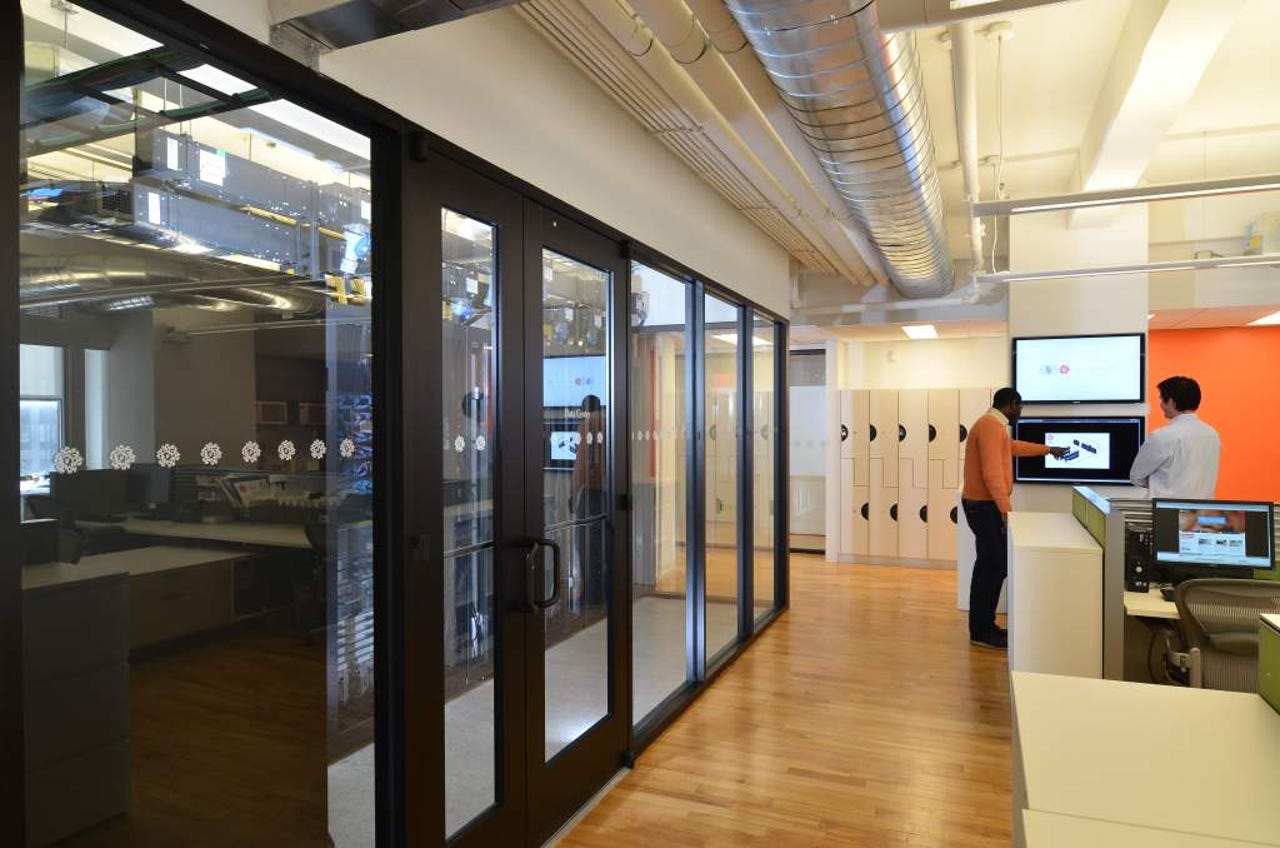Case study: School of Visual Arts overcomes energy and infrastructure challenges

By Will Kelly
The School of Visual Arts in New York City is one of the finest colleges of art and design in the United States. It serves more than 3,500 undergraduate and 500 graduate students, and employs a faculty of approximately 1,100 artists, writers, designers, filmmakers, and photographers, along with 600 administrative staff members.
When CIO Cosmin Tomescu joined the staff, the university was facing a number of data center challenges. Among those challenges was designing a data center infrastructure that would grow with the university, all within the constraints of New York City real estate. Top that off with a goal from the mayor's office for the school to lower its carbon footprint.
Emerson Network Power, a primary data center infrastructure provider for SVA, put me in contact with Tomescu, who was gracious enough to answer some questions about the unique energy-saving and infrastructure challenges SVA faced in its data center project.
Tomescu explained the project:
"When I joined SVA's staff in 2009, the college was growing rapidly and its IT infrastructure of 50 physical servers along with it. Within a year, we were deep into assessing the school's long-term data center needs to provide a strong foundation for a dynamic future. Along with our design team and a fleet of external engineers, we embarked on a journey to build a flexible, efficient infrastructure that today rivals an enterprise-size environment with three to four times the IT support staff. We started the project in fall 2010 and completed over the summer in 2011."
His team worked closely with facilities and the executive management of the college during the course of the project.

One challenge SVA and Tomescu's team faced is New York City real estate. Tomescu said it was the primary constraint in this project and laid out the challenge: "How do you build a flexible, scalable enterprise-class data center within a finite floor space? You have to carefully select what technologies you use for the foundation of your data center."
The team understood from the beginning that rack space could be a problem in the coming years, so it decided to heavily invest in virtualization, taking the physical constraint out of the equation.
"Since we use higher density equipment (networking, server, storage), efficient cooling was needed as well. We knew the issues we were facing on a daily basis in our old data center. The IT team lacked visibility into the data center, such as a dashboard for monitoring environmental conditions and power distribution," Tomescu said.
The team did a review of the infrastructure and found that they weren't well positioned for growth (unavailability of additional rack space, cooling, and electrical). They had to scrutinize individual devices and had no way of knowing at a glance if all systems were running to spec.
Floor space was indeed a challenge to data center cooling. As Tomescu explained, "Having the floor space limitation, it became clear that traditional room-based data center cooling units wouldn't work for us. Due to the tonnage requirement of the HVAC, ceiling-mounted units were not an option either. We opted to go with in-row cooling as a solution, but we quickly found out the steep requirements for the chilled water infrastructure needed to support this technology."
The older urban buildings in Manhattan added to the challenges the team had to meet. They installed new chiller towers on the roof of the building, along with externally mounting a water supply and return risers on the rear of the building, running from the eighth floor to the roof of their 12-story, pre-war Manhattan building.
"Due to the age of the building and the weight load (lbs per sq ft) of the chiller tower infrastructure, we had to reinforce the steel structure of the top floor," said Tomescu.
With the correct HVAC solution in place, the team focused its attention on getting the electrical power needed to run the data center. Running dedicated power from Con Edison to the eighth floor data center presented another challenge. They had to core drill eight floors and install new electrical risers.
"Unfortunately," Tomescu said, "the electrical riser had to run through existing office spaces, causing disruptions. Once we delivered power to the data center floor, we found the electrical panels and power distribution units needed a much larger dedicated space."
Originally, these were planned to cohabitate inside the data center space, but the team was forced to give up a storage space on its floor to accommodate a new electrical room.
Tomescu said that the weight load of a centralized UPS infrastructure is something they had to take into serious consideration during the design phase. They installed battery backup cabinets weighing 12,000 lbs. Along with the rest of the racks and expected load, once equipment was going to be rack-mounted, they far exceeded the building's specs. In answer to that, they built a concrete slab under the data center and reinforced the steel structure on the floor below to increase the floor load capacity.
Communication between management and the general contractor during the process was important for the success of the project. "Both during the design phase and implementation, we made sure that everyone was on the same page," Tomescu said, "Frequent on-site meetings were held for this reason and our IT team was involved throughout the entire project."
Carbon footprint and the data center
Tomescu and his team also faced the challenge of lowering the carbon footprint as part of the overall data center project goals. In 2008, SVA became a partner in Mayor Michael Bloomberg's "30 in 10" challenge to New York City's universities to reduce greenhouse gas emissions 30 percent by 2017. Learning from a citywide carbon inventory that New York's buildings were the primary source of these emissions, SVA decided to participate, taking stock of its carbon footprint and taking steps to move toward sustainability.
"During the deployment, we were introduced to a New York State Energy Research and Development Authority (NYSERDA) rebate program that rewards organizations for deploying data center infrastructures that are measurably more energy efficient than traditional designs," Tomescu said.
This rebate recognizes the total energy savings from the project Tomescu and his team delivered on both carbon footprint reduction and energy savings for SVA. He tallied up the project's financial savings: "The project's total energy savings stemmed from both server virtualization and upgrades to the cooling system and lighting. Calculated electricity savings from these initiatives totaled 302,944 kWh/yr and 30.4 kW in peak demand savings, with a corresponding annual cost savings of $60,589. This earned SVA a $48,471 NYSERDA rebate, lowering the overall project cost."